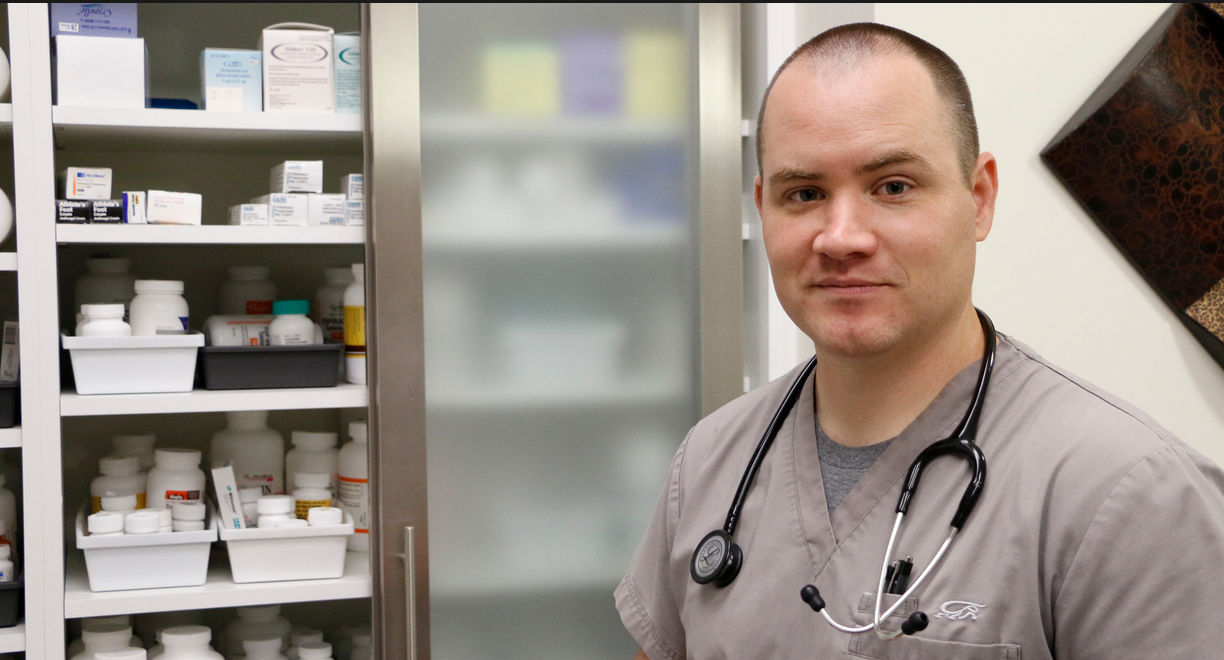 Under the direct care model, doctors eschew insurance contracts and deal directly with their patients. Click To Tweet
Under the direct care model, doctors eschew insurance contracts and deal directly with their patients. Click To Tweet
MacIver News Service | Nov. 13. 2017
By M.D. Kittle
MADISON, Wis. – State Rep. Joe Sanfelippo believes the free-market can lead the nation out of the health care mess wrought by liberals over the past several years.
To that end, the West Allis Republican is circulating legislation that would establish a state direct primary care program for the 1.1 million people on Medical Assistance in the Badger State.
The proposal also allows a health care provider and an individual patient or employer to enter into a direct primary care agreement, without being subject to the state insurance laws.
Sen. Chris Kapenga, R-Delafield, is the lead author on a companion bill in the Senate.
Sanfelippo says adding direct primary care to Medicaid programs could drive down costs by as much as 20 percent, potentially saving taxpayers hundreds of millions of dollars.
Under the direct care model, doctors eschew insurance contracts and deal directly with their patients. Many charge a monthly membership for routine visits and drugs. They list their prices for procedures up front, prices that are often significantly lower than the standard insurance-driven model.
Sanfelippo says adding direct primary care to Medicaid programs could drive down costs by as much as 20 percent, potentially saving taxpayers hundreds of millions of dollars.
“In our Medicaid program we have an overabundance of emergency use for primary care. Obamacare didn’t change that; if anything it made it worse,” Sanfelippo told MacIver News Service.
Sanfelippo, chairman of the Assembly Health Committee, said 80 percent of Medicaid patient illnesses could be treated by a primary care provider. Instead, many of the cases are being handled in the significantly more expensive emergency room.
Direct primary care for a set monthly fee could stem the tide of Medicaid emergency visits, provide more cost-effective preventative health care and, unlike former President Barack Obama’s failed promises, direct care could truly “bend the health care cost curve.”
“We are spending a fortune,” Sanfelippo said, noting that the state spends $56 million annually on Medicaid recipients who use the ER more than seven times a year.
Total Medical Assistance payments in Wisconsin have soared from $4.7 billion in 2004 to nearly $9.2 billion in the 2016-17 fiscal year, according to the Legislative Fiscal Bureau.
The bill specifically states that direct primary care is health care, not health insurance, and therefore is not bound by the state insurance law. That provision could open the door to a more robust direct care marketplace, further driving down costs through competition.
Direct care is empowering consumers and the free market to drive down the cost of health care and, as has been abundantly documented, improve outcomes.
Direct care is empowering consumers and the free market to drive down the cost of health care and, as has been abundantly documented, improve outcomes. It offers the return of the true doctor-patient relationship because it shifts control from far away bureaucrats to health care consumers.
Price transparency up front. No negotiating. No haggling. No copays or deductibles or piles of insurance paperwork and administrative red tape. Just a flat fee for the medical service provided.
Sanfelippo pointed to Solstice Health, a direct primary care clinic in his district providing unlimited health care services for as little as $39 per month. The model is built on pricing transparency, and the monthly memberships come without per-visit fees, and with unlimited wholesale labs, wholesale imaging, and wholesale medications.
“It’s Your Money. Its Your Healthcare. Take It Back,” declares Solstice on its website.
“Nobody takes their car to the repair shop and says, ‘Just fix it. I’ll wait to see what the bill is when you’re done.’ Yet that’s exactly what we do with our health care,” Sanfelippo said.
Direct care providers presage a “fundamental shift toward more transparent, market-driven pricing” and changes in hospital capital allocation, health care industry consultant David Johnson told Crain’s Chicago Business earlier this year.
“What’s happening in the private market will ultimately reshape health care more than government reimbursements” he said.
Twenty-three states have some form of direct primary care law in place, but Wisconsin could be a national leader in bringing direct primary care to its Medical Assistance programs.
But Sanfelippo knows it won’t be easy. He’s prepared for a pitched battle with the insurance industry.
“I expect there will be a lot of resistance from DHS. They feel they are the experts and (think) the only ideas that are good are the ones that come from their departments,” the lawmaker said.
The legislation requires DHS to issue requests for direct primary care proposals serving Medicaid patients by Oct. 1, 2018 “in at least one location.” DHS could expand to different locations. The department must enter into a contract with at least one provider by Jan. 1, 2019 and implement a direct primary care program, according to the bill. Health care services would begin by March 2020.
If necessary, DHS must seek federal approval for the program. If the federal government says no, the program would not be implemented.
The bill pegs the average monthly fee, to be set by DHS, at $70 per month “if there are equal numbers of participants from each (Medical Assistance) population.”
DHS would be required to provide status reports on the program, and investigate complaints.
Sanfelippo said he will push for legislative hearings soon.
“I don’t expect changes overnight. I’m hoping we will have a lot of open-minded people willing to consider it,” the lawmaker said.
Sanfelippo discussed his legislation with MacIver News Service’s Matt Kittle on News/Talk 1130 WISN: